Five insights challenging science's unshakable 'truths'
If you thought dying of loneliness was just an old wives' tale, or that genetic inheritance is fixed – think again. Michael Brooks on science's most unexpected findings
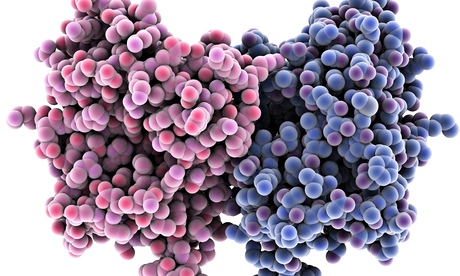
Methyl groups, which affect our genes, often come from what we eat. Photograph: Science Photo Library
1 | Lifestyle can change genes
We have come to think that if something is "in our genes", it is our inevitable destiny. However, this is a gross oversimplification. We have each inherited a particular set of genes, but the outcome of that inheritance is not fixed. Our environment, diet and circumstance flood our bodies with molecules that switch the genes on or off. The result can make a huge difference to our destiny – and that of our descendants.
One example of these "epigenetic" changes occurs when a bundle of carbon and hydrogen atoms known as a methyl group attaches itself to the DNA and changes the way its instructions are carried out. The degree of the effect depends on the exact shapes into which the DNA in cells is coiled; sometimes certain genes become more or less exposed to external influences. But it can have major effects: the effect of methyl groups on DNA can make the difference between a foetus being healthy or stillborn.
Methyl groups often come from what we eat. Lack of food seems to have an epigenetic effect, too. A study of Dutch women starved by the Nazis during the second world war – the British actress Audrey Hepburn was among them – has found elevated levels of schizophrenia, breast cancer and heart disease. The data suggest that the alterations to which genes are turned on or off survive at least two generations: the one that suffered in the womb during the famine, and their children.
They may go much further. A 2011 study published by researchers at the Salk Institute in La Jolla, California, demonstrated epigenetic mutationsthat lasted for at least 30 generations in plants. So far, we haven't proved such long-term changes in humans but there are hints that epigenetics cascades through the generations.
A 2001 study traced the long-term effects of nutrition – and malnutrition. Controlling for socioeconomic factors, a boy approaching puberty who overate at the beginning of the last century generally reduced his grandson's life expectancy by a whopping 32 years. Other studies show that if boys start smoking before the age of 11 their sons will be significantly more overweight by age nine than their peers with fathers who only took up smoking later. The only way this can happen is if the act of smoking tobacco triggers some epigenetic change in the way DNA is activated in their sperm.
Standard biological thinking says that the body strips away molecules such as a methyl group from sperm and eggs so that they are "reset" to their default state. However, a study published by Cambridge researchers last year showed that approximately 1% of the changes get through the erasure process unscathed. What you eat, what your mother ate, the age when your grandfather started smoking, the amount of pollution in your neighbourhood – these factors have all been linked to epigenetic changes that get passed down through the generations. Armed with this new insight, we can take far more control of our health – and the health of future generations.
2 | The mind can affect the body
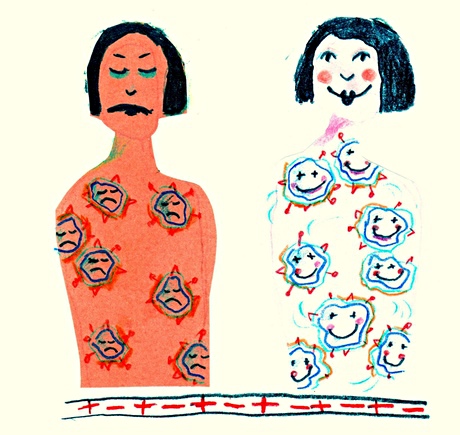 Positive thinking: the state of our mind affects our physical health. Photograph: Alamy
Positive thinking: the state of our mind affects our physical health. Photograph: Alamy
The US National Oceanographic and Atmospheric Administration has a piece of advice for anyone trying to survive immersion in freezing cold water: "Keep a positive attitude. Will to live makes a difference." Does it really? It seems so.
We know that simple mind tricks can suppress the immune system in animals. First, you teach rats to associate saccharine with a stomach upset by spiking sweet drinks with a drug called cyclophosphamide. Then you just give them saccharine. They will be significantly more susceptible to pathogens than animals given saccharine but no conditioning.
Humans are not exempt from mind-immune system connections. Research carried out on 4,000 people over a 12-year period showed that a man whose wife has just died had a 25% higher chance of dying in those 12 years. The bereaved reported heart and circulatory problems twice as often as people in the control group.
In 2010 a study conducted in the US enumerated the dangers of loneliness. If you have "adequate" social connections, you are 50% more likely to live to the end of a specified period than those who are lonely. In other words, the effect of having good friends is roughly similar to giving up smoking or making a significant cut to your intake of alcohol. A 2012 study, which followed 2,000 US citizens aged 50 and above, found that being chronically lonely was associated with being almost twice as likely to die over the period of the study. Another 2012 study found that elderly people who simply want to live longer do indeed have a better life expectancy regardless of their physical health at the time their desire is expressed.
What used to be dismissed by science as superstition or old wives' tales is now coming to the fore. The state of our minds has a palpable effect on our bodies, meaning that we are finally learning how to protect ourselves better from the worst ravages of illness.
Such knowledge is improving our state of mind too. In 2011 Hasse Karlsson, professor of psychiatry at the University of Helsinki, looked at 20 studies of brain changes induced by psychotherapy and concluded that we are moving towards a situation where we know so much about what psychotherapy does – how our subjective experience can be manipulated to change the physical structures of the brain – that specific types of psychotherapy can be used to target particular brain circuits. As Nobel laureate Eric Kandel has put it: "Psychotherapy is a biological treatment, a brain therapy."
Sigmund Freud started this field in 1895. However, his "Project for a Scientific Psychology" was a miserable failure because we knew too little about the brain. Now, though, we have much better tools with which to explore the mind's effect on the body, and Freud's abandoned programme is finally bearing fruit.
3 | Quantum effects exist in biology
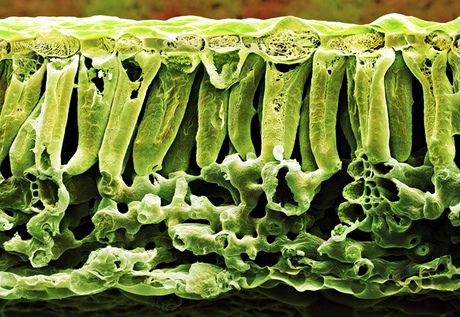 Plants use quantum theory to harvest energy from the sun. Photograph: Power & Syred/SPL
Plants use quantum theory to harvest energy from the sun. Photograph: Power & Syred/SPL
If you were designing life from scratch, you'd probably want to avoid the vagaries of quantum theory. Quantum particles such as atoms and electrons do strange things. They can be in two different places at once, or be affected by measurements performed on other particles. Surely such things could only be a hindrance to the smooth functioning of life's processes?
That's certainly what the physicist Erwin Schrödinger said in 1944. Life, he decided, had to be built on a scale that would bury all the weird quantum effects. But Schrödinger was wrong. Plants, for instance, use quantum theory to harvest energy from the sun.
Experiments performed on algae (their light-harvesting equipment is a little more accessible to experiments) have shown that they can channel the sun's energy using "superposition", where the energy travels through the organism using many paths at once. This trick effectively searches all possible paths simultaneously, and finds the quickest and thus most energy-efficient route. That means the energy reaches the plant's storage centre before it dissipates.
There are also hints that smell is a quantum sense. Our noses appear to work by sensing the natural vibration frequencies of the bonds between atoms in molecules. Those frequencies determine whether a smell receptor is switched on and sends a signal to the brain. The best explanation for experimental observations involves an electron using a phenomenon known as quantum uncertainty to tunnel through a seemingly impenetrable barrier. Essentially, it borrows energy from the universe in order to leap across an empty space in the smell receptors and trigger the brain's sense of smell. As long as it returns the energy quickly enough, the electron can use as much as it needs. This "quantum tunnelling" phenomenon is also at the heart of modern electronics."
Then there's the navigation trick birds use for migration. Studies of the European robin (and the robin had to wear a cute little eyepatch during this research) suggest that a particular configuration of a molecule in the robin's retina – a configuration that can only be explained by the rules of quantum theory – allows the bird to sense Earth's magnetic field and thus determine the direction in which it should fly.
We don't know what other quantum feats nature performs, but the fact that these things happen in the warm, wet world of biological material suggests that we are missing a trick. At the moment, we can only access the quantum world if we cool atoms and molecules down to near absolute zero and isolate them from all vibrations and other disturbances. If we can work out how nature functions without such precautions, we might be able to harness quantum theory for ourselves, creating highly efficient solar panels, for instance, or super-sensitive navigation tools.
4 | The universe is a computer (and we are the programmers)
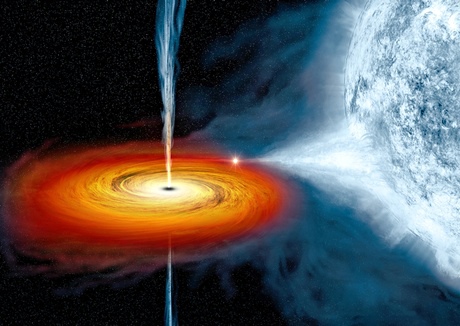 The study of black holes has led scientists to question the very nature of reality. Photograph: Nasa
The study of black holes has led scientists to question the very nature of reality. Photograph: Nasa
At the forefront of knowledge – the place geneticist Jacob Bronowski once referred to as "the edge of uncertainty" – the biggest thinkers are starting to come to terms with an extraordinary idea. The universe, they say, behaves exactly like a computer, processing and generating information. In this scenario, we, by our conscious and unconscious actions, are playing the role of that computer's programmers.
The first person to think of the cosmos as a human-powered computer was science-fiction author Isaac Asimov. In 1956, in The Last Question, he imagined a situation where two people engage in a bet that ends with humanity absorbed into the intelligent processor that we know as the universe. This was the inspiration behind Douglas Adams's depiction of the Earth as a supercomputer in The Hitchhiker's Guide to the Galaxy.
Truth, though, seems to be stranger than fiction. In the past few years, MIT engineer Seth Lloyd has calculated that a single atom can carry 20 binary digits (bits) of information and that two atoms can collide with an outcome that is entirely equivalent to the information processing that goes on within a computer. The concentration of chemicals within a mix can also store bits: cause these chemicals to react together, and they too can process the information like a computer. Viewed from this perspective, the whole universe is busy performing computations.
According to Lloyd's calculations, a kilogram of matter can perform around a million billion billion billion billion billion operations every second. That processing power is applied to about 10 thousand billion billion billion bits of information. Since time began, Lloyd has calculated, the universe has performed around 10 to the power of 122 operations on 10 to the power of 92 binary digits. What are those operations? We see them aschemistry and physics, as the processes of life and the mechanisms of thought.
There are many more implications to this branch of science – it appears, for instance, that what we call reality is actually a projection of information held at the edge of the universe. The conclusion comes from the study of black holes. One of the sacred laws of physics is that information can't be destroyed. That's a problem when you consider the information contained in things that fall into black holes – unless it remains at the event horizon, which is the spherical "point of no return" surrounding a black hole. That means all the information about what's inside the black hole is held at its edge. If that's true for black holes, it's probably true for the universe as a whole. And that means we are effectively the "holographic projection" of the information held on the spherical shell of the universe.
Whatever the truth we eventually settle on, it seems that life does have some meaning. Where scientists used to say we live out a purposeless existence, it turns out that we, by our actions and minds, are programming the universe. Or, as Carl Sagan put it: "We are a way for the universe to know itself."
5 | Human beings are nothing special
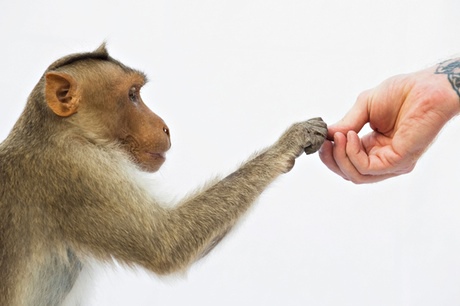 Humans are not the only animals that use tools or have personality types. Photograph: Tim Gainey/Alamy
Humans are not the only animals that use tools or have personality types. Photograph: Tim Gainey/Alamy
We have been taught to think of ourselves as the pinnacle of creation, but that pinnacle is getting rather crowded. In many cases, crows and chimps can use tools – and sometimes abstract reasoning – better than humans. If it's culture that makes you feel superior, visit the Tanzanian Gombe chimps, Canadian killer whale communities or Australian dolphins: they all show distinct cultural practices in the way they relate with one another, hunt or sing. Animals show personality and morality – elephants can be empathetic or insensitive, rats can be lovers of fair play, spiders can be bold or spineless, chipmunks can be extrovert or shy. Cockroaches have feelings, too, it turns out.
Even the hard facts are letting us down: at the moment, researchers know of only a handful of genes unique to humans; it's thought that, when the count is finished and the numbers are totted up, fewer than 20 of our 20,000 genes will be exclusively human.
It's ironic that biology's love of hard facts is what has delayed our discoveries about the things we share with animals. Darwin was quite convinced of animal personality, compassion and feelings. However, the 1882 publication of George Romanes's book Animal Intelligence, a schmaltzy anthology of readers' tales and anecdotes, sent scientists running from the subject, and it became taboo for nearly a century. That is why Jane Goodall suffered endless insults and derision for her assertions that chimps did not all behave the same way, and that they exhibited moods and personalities, went through childhood and adolescence and grieved at the deaths of their relatives.
One thing does set us apart: our linguistic abilities. These, however, are a quirk of evolution. Although nothing in the animal kingdom is using what we think of as language, gestures used by bonobos and orangutans come close. The fact that we have slightly different anatomical arrangements that allow us to speak is hardly a marker of a fundamental difference.
So we are top of the class, perhaps, but not in a class of our own. This understanding should lead us to re-examine the relationship we have with animals. It is already becoming clear that their personalities affect their ability to survive habitat change. A 2004 study of the three-spined stickleback found that the chemical ethinyl estradiol, which is contained in birth-control pills and has been found in significant concentrations in waterways around the world, makes female sticklebacks exhibit more risky behaviour. The result is lower survival times compared with those in unpolluted waters.
Our responsibility goes beyond habitat pollution and destruction. Our discoveries mean we are already changing the way (and extent to which) we experiment on animals. The next step may be more far‑reaching: how comfortable would we be, for instance, eating a lobster that we knew was terrified by its capture?
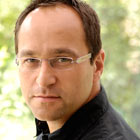

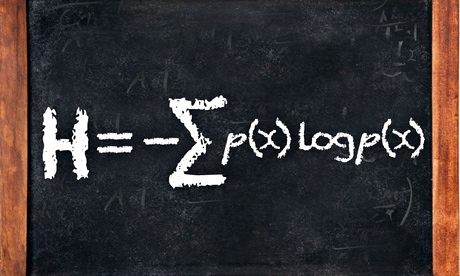
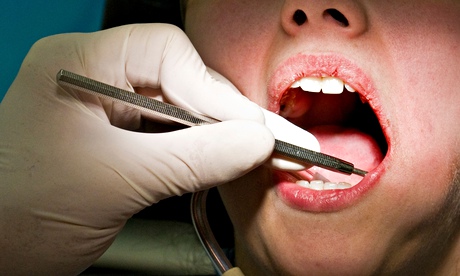
 Goodbye to all that
Goodbye to all that 
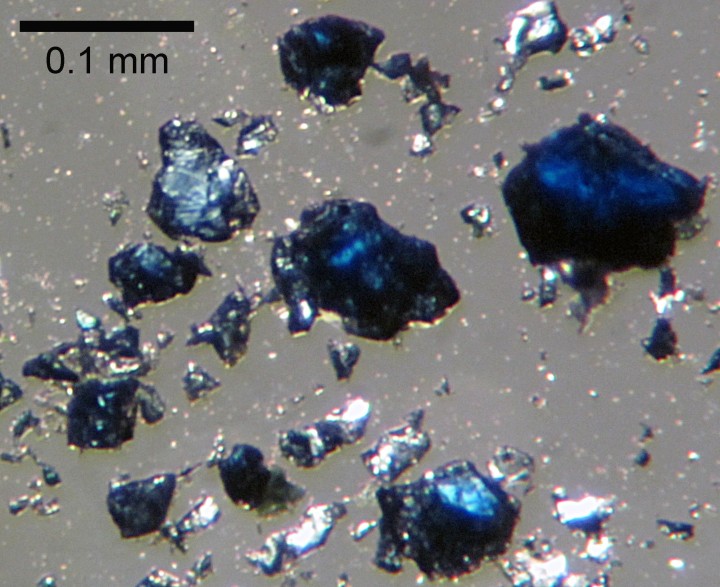 STEVE JACOBSEN / NORTHWESTERN U.
STEVE JACOBSEN / NORTHWESTERN U.


